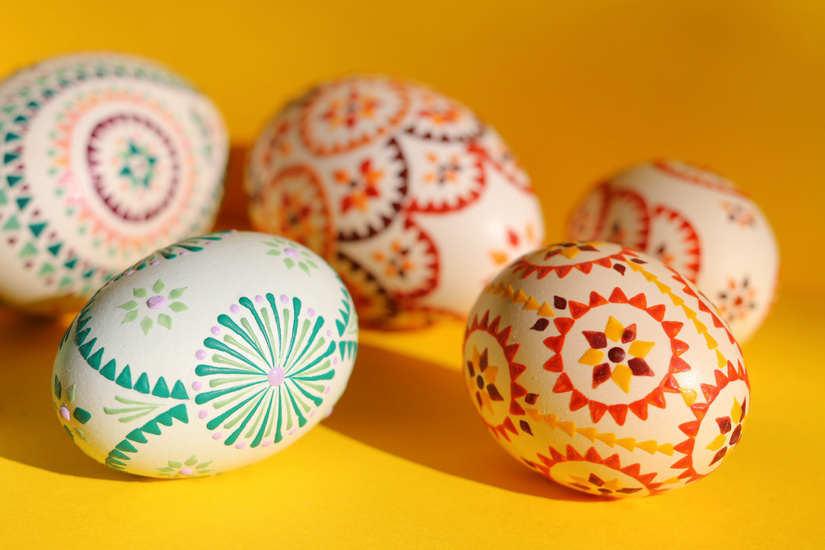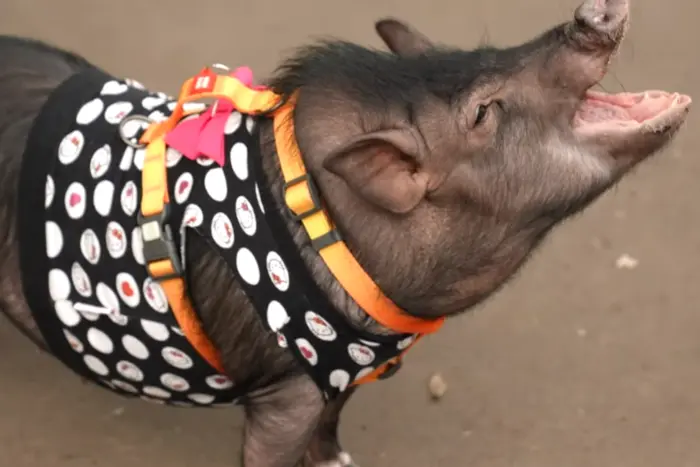How to beautifully and unusually paint eggs for Easter.


Despite some confusion about the Easter dates this year, some Ukrainians are still planning to celebrate this day soon. That's why ideas on how to paint eggs for Easter or bake an Easter cake are needed.
The question of how and with what to paint eggs for Easter is quite interesting. There are many nuances and a lot of traditions in this matter. Therefore, how to paint eggs in onion peel or how to paint eggs with food dye depends solely on personal preferences.
How to dye eggs with food dyes (and other methods): what to know about this tradition?
Interestingly, eggs are dyed for Easter quite often in various countries and cultures. Some do this with food dye, others with dry dye or even natural materials.
However, let's go back to the beginning: the tradition of dyeing eggs for Easter (Pascha) has deep roots and is related to ancient rituals and symbols of different cultures.
The most popular of them are:
Pre-Christian rituals. The tradition of dyeing eggs has its roots in pre-Christian rituals of spring renewal and rebirth. Some peoples believed in the power of the egg as a symbol of life, fertility, and rebirth. They used dyes to decorate eggs and mark the arrival of spring and new life.
Christianity and Easter. Later, when Christianity became the dominant religion in many regions of the world, many of these rituals were restored and transformed into Christian traditions. For example, the egg, symbolizing new life, became a symbol of Christ's resurrection in Easter tradition.
Color symbolism. In different cultures and traditions, the colors used to dye eggs can have different symbolic meanings. For example, Ukrainian pysanky often have deep symbolism in colors, where red means love and life, black means death and evil, and green means spring and nature.
Traditions and customs. In many countries around the world, egg dyeing at Easter remains an important part of the celebration.
Thus, the tradition of dyeing eggs for Easter is rooted in ancient rituals, but their relevance does not diminish over the years.
Where and how are eggs dyed?
Easter eggs or krasankas are created in many countries. At the same Time, the traditions can vary significantly:
Ukrainian pysanky - these are Easter eggs known worldwide, decorated with multicolored patterns using wax and special techniques. Each pattern has symbolic meaning, and the colors express certain concepts and wishes.
In Poland, there is a tradition of dyeing eggs using natural materials such as onion, coffee, or plant leaves. This gives the eggs a unique look and natural patterns. Similar methods are also used in Ukraine.
In Greece, the tradition of dyeing eggs for Easter is accompanied by other rituals.
In the UK and other countries where Easter traditions are widespread, children often participate in traditional egg games, such as competitions for the strongest or best-decorated egg.
In Romania, there is a tradition of pouring water or paint on each other during Easter celebrations. This symbolizes cleansing and new birth, which are important aspects of the celebration.
In certain regions of Spain, there is also a tradition to dye eggs and bless them in the church.
Easter eggs have many old traditions that are still celebrated on Easter day.
How to dye eggs with natural ingredients?
In Ukraine, as well as in Poland, natural dyes are popular. Typically, this refers to onion peel, turmeric, or beetroot.
Onion peel
Dyeing eggs with onion peel is a simple and natural way to give them a natural color. How to do it:
Prepare onion peel. Collect it from several onions. You can gather peel from different types of onions if you want to get different shades.
Before starting, prepare the eggs. If they are fresh, it is better to add a few drops of vinegar to the water when boiling. This will help make the peel a better dye.
Then add the onion peel to a pot with water and eggs.
Bring the water to a boil, then reduce the heat and simmer the dye for a few minutes. The longer you cook, the deeper the color will be, but remember not to overcook the eggs.
After dyeing, the eggs need to cool down.
If you need a deeper coverage, keep the eggs in the solution longer or use more peel.
After the eggs have cooled, remove the peel and wipe the eggs.
You can get eggs of different colors from the peel.
Hibiscus Tea and Turmeric
Another option for dyeing eggs is to use Hibiscus tea and turmeric spice.
How to do it:
It is best to use fresh eggs. Boil them immediately or boil them in the dye right away.
Next, prepare the following solution: for turmeric - dissolve turmeric in water, for hibiscus - add hibiscus to hot water.
You can boil the cooked eggs in the solution or dip them in the dye.
After the solution has cooled, take the eggs out of the water and let them dry.
After this, you can apply a design on the surface.
How to dye eggs with dye?
Ready-made dye is a proven option. First, you need to prepare a place for dyeing.
Before starting work, check if the eggs are intact. If they are fresh, it is better to boil them, unless otherwise noted in the instructions.
In general, it is advisable to rely on the dye instructions. Whether you use them for fresh or already boiled eggs.
After that, dip the eggs in the dye or apply the dye with a brush or special coloring pens. It is worth experimenting with different colors and patterns by applying the dye in different ways. After dyeing, leave the eggs to dry on a paper towel or sieve so that they dry completely. After that, you can apply patterns or other details.
How to create original designs for Easter eggs?
Creating non-standard and original designs for Easter eggs can be an exciting and creative process. You can involve children and other family members in it.
What designs will be really successful choices for Easter:
Geometric patterns. Use tape or stickers to create geometric patterns on the eggs. Dye the eggs in different colors, then apply tape or stickers to create the desired design. Then dye the eggs in another color. After that, you need to remove the tape.
Marbling. Dip the eggs in a glass of water with diluted acrylic paint. Using a toothpick or knife, create patterns by dragging the paint on the surface of the water. Then carefully dip the eggs into this solution, let them dry, and then wipe off the excess paint from the surface.
Enamel eggs. Use wax pencils or wax to draw designs on the eggs. Paint the eggs in the base color, then draw the desired patterns on them with wax. Then dye the eggs in another color.
Place leaves or grass on the surface of the eggs, and secure them with thin bags or rubber bands. Then dye the eggs in the desired color. After drying, remove the leaves.
Use stencils or templates to create designs on the eggs. Place the template on the egg and dye it in one color. After drying, remove the template.
In general, it is best to choose several options at once to create unique designs. If there is not enough time for this, you can simply dye the eggs and involve the whole family in the process.
Read also
- What to see in Bukovel: winter, summer and autumn
- What to see in Iceland: in winter, in summer, on a tour
- What is p2p and pay2pay transfer
- Best Adult Films: TOP 5 Films










